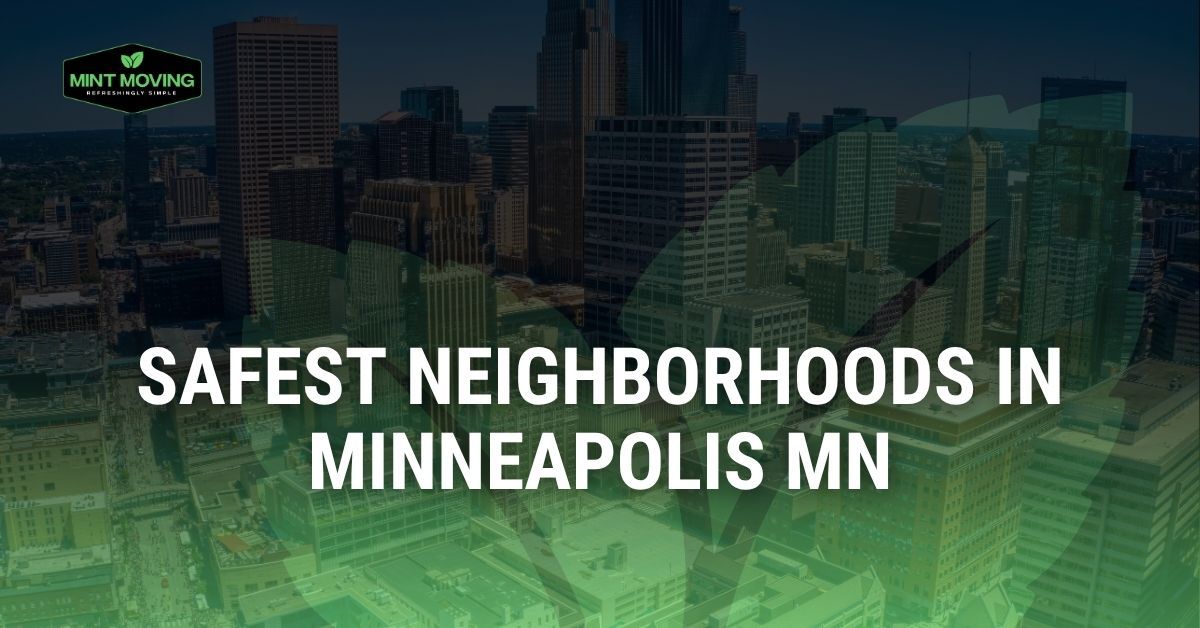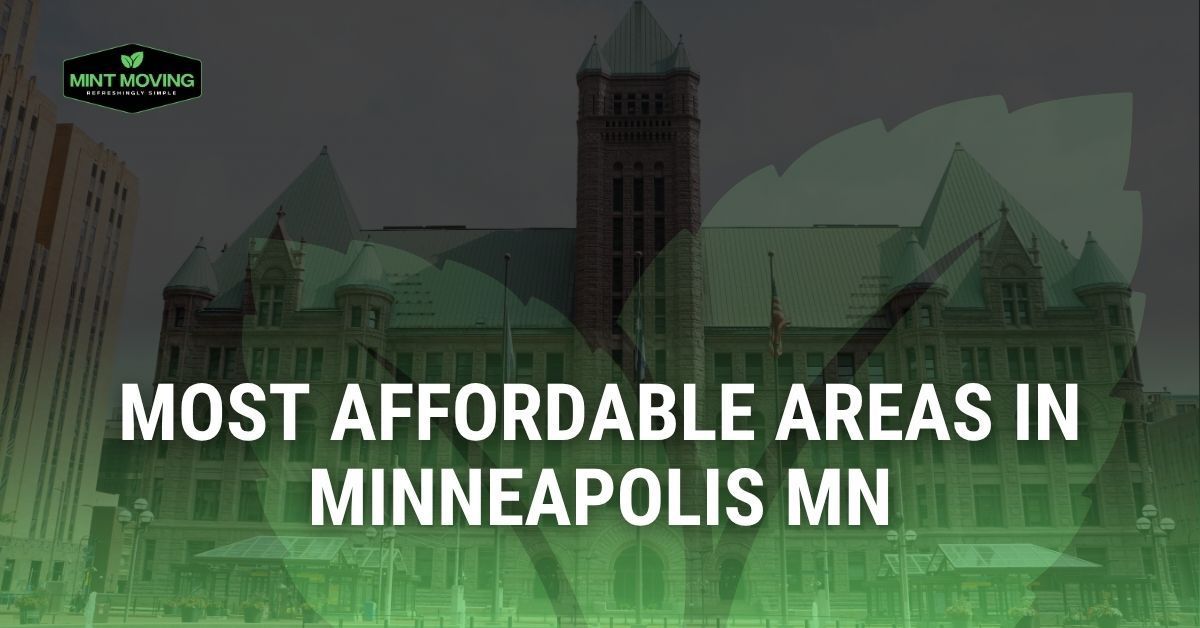Living in Linden Hills: Complete Guide
We know that choosing where to plant roots in Minneapolis is both exciting and overwhelming, and if you're considering Linden Hills, you're exploring one of the Twin Cities' most cherished neighborhoods. Living in Linden Hills means joining a community where neighbors gather for ice cream at Sebastian Joe's, children bike safely to Kenny Elementary School, and weekend mornings start with pastries from Turtle Bread Company. As Mint Moving has helped hundreds of families relocate to this lakeside gem, we've witnessed firsthand why Linden Hills Minneapolis MN consistently ranks among the metro's most desirable addresses.
This Linden Hills neighborhood guide provides everything you need to understand what makes this Southwest Minneapolis enclave special. From the charming shops along 43rd Street to the concerts at Lake Harriet Bandshell, we'll explore the daily realities of life in this walkable village within the city. Whether you're drawn to the Linden Hills Minneapolis community for its top-rated schools, its proximity to the Chain of Lakes, or its perfect balance of urban accessibility and neighborhood tranquility, this guide delivers the insights you need to make an informed decision about moving to Linden Hills Minneapolis.
The Linden Hills Lifestyle
The Linden Hills neighborhood epitomizes what many seek when moving to Minneapolis—a true neighborhood feel with big-city conveniences. Bounded by Lake Calhoun (Bde Maka Ska) to the east, Lake Harriet to the south, and France Avenue to the west, this compact neighborhood creates an almost village-like atmosphere where daily errands become opportunities for spontaneous neighbor encounters.
Your typical Saturday in Linden Hills might start with a bike ride around Lake Harriet's 2.75-mile path, followed by brunch at The Harriet Brasserie overlooking the lake. Afternoons bring families to Wild Rumpus, the beloved children's bookstore where chickens roam freely and cats nap among picture books. You'll spot neighbors at Settergren's Hardware—a neighborhood institution since 1922—picking up gardening supplies or chatting with owners who remember everyone's names.
The 43rd and France business district anchors neighborhood social life. Here, Bibelot Shops offers eclectic gifts and home goods, while Great Harvest Bread Company fills the air with fresh-baked aromas. Fashion Anchors boutique dresses the neighborhood's style-conscious residents, and Everett & Charlie gallery showcases local artists. Evening might find you at Naviya's Thai Cuisine or grabbing takeout from Pizzeria Lola, Ann Kim's James Beard Award-winning restaurant known for its copper-clad pizza oven and Korean-influenced pies.
Summer transforms Linden Hills into an outdoor paradise. The Lake Harriet Bandshell hosts free concerts Monday, Wednesday, Friday, and Saturday evenings from June through August, where families spread blankets on the hillside while kids dance near the stage. The Linden Hills Festival each May turns the business district into a street fair with local vendors, live music, and the famous Woofstock dog festival. Rose gardens at Lyndale Park bloom just across Lake Harriet, providing Instagram-worthy backdrops for engagement photos and family portraits.
Housing and Real Estate
The Linden Hills real estate and housing options reflect the neighborhood's desirability, with home values consistently ranking among Minneapolis's highest. The neighborhood's housing stock primarily consists of well-maintained early 20th-century homes, from 1920s Tudors to 1940s ramblers, alongside occasional new construction where teardowns have occurred.
Current market conditions show median Linden Hills homes for sale ranging from $550,000 for smaller bungalows away from the lakes to well over $1.5 million for lakefront properties on Lake Harriet or Lake Calhoun. The most coveted addresses line West Lake Harriet Parkway, where stately homes feature private lake access and unobstructed water views. Interior neighborhood streets like Sheridan Avenue and Upton Avenue offer more attainable options, with three-bedroom homes typically listing between $600,000 and $850,000.
Architectural diversity adds visual interest throughout Linden Hills. You'll find Prairie School designs influenced by nearby Lake Place, Colonial Revivals along Abbott Avenue, and contemporary rebuilds maximizing lake views. Many homes retain original details like built-in buffets, hardwood floors, and leaded glass windows, while updated kitchens and finished basements meet modern family needs. Lot sizes average 7,500 square feet, providing yards for gardens and play spaces increasingly rare in urban settings.
For renters, Linden Hills apartments for rent prove limited but available. The Linden Hills Co-op at 43rd and Upton offers affordable senior housing, while converted duplexes and carriage houses provide occasional rental opportunities ranging from $1,500 to $2,500 monthly. The nearby Calhoun Isles apartments on West Lake Street offer more availability with lake proximity, though technically sitting just outside Linden Hills boundaries.
Property taxes reflect premium values but support excellent city services and parks. Homeowners typically budget $8,000-15,000 annually for properties valued between $600,000 and $1 million. The Linden Hills neighborhood association remains active in development issues, generally opposing density increases to preserve single-family character, which contributes to sustained property values but limits affordable housing options.
For broader neighborhood comparisons, explore our guide to luxury neighborhoods in Minneapolis, MN to see how Linden Hills compares to other premium areas.
Schools and Education
Education excellence drives many families when moving to Linden Hills Minneapolis, with the neighborhood feeding into some of Minneapolis Public Schools' highest-rated institutions. The combination of strong academic programs, involved parent communities, and walkable school access creates an ideal environment for raising children.
Kenny Elementary School serves as Linden Hills' neighborhood school, consistently ranking among Minnesota's top elementary programs. Located at 5720 Emerson Avenue, Kenny enrolls about 560 students in grades K-5, with test scores significantly exceeding district and state averages. The school's Spanish dual-immersion program attracts families citywide, while the general education program emphasizes project-based learning and environmental education using nearby Lake Harriet as an outdoor classroom. Kenny's active PTA raises over $100,000 annually, funding classroom technology, field trips, and specialist positions.
For middle school, Linden Hills students typically attend Anthony Middle School, about two miles away in the Windom neighborhood. Anthony's International Baccalaureate Middle Years Programme provides rigorous academics, with particular strengths in mathematics and science. Some families choose Justice Page Middle School's arts focus or Anwatin Middle School's International Baccalaureate program, both accessible via school choice.
Washburn High School, located just across Lake Harriet, serves as Linden Hills' designated high school. With 1,900 students, Washburn offers comprehensive programming including Advanced Placement courses, International Baccalaureate diplomas, and strong athletics. The school's liberal arts tradition produces numerous National Merit Scholars annually, while its location adjacent to Lake Harriet provides unique opportunities for environmental science and crew teams.
Private school alternatives include nearby Benilde-St. Margaret's Catholic school in St. Louis Park, Blake School's multiple campuses, and Breck School in Golden Valley. These institutions draw many Linden Hills families seeking smaller class sizes or specific religious education, with tuitions ranging from $20,000 to $32,000 annually.
Early childhood options abound, with Linden Hills Montessori, Children's Garden Montessori, and various home-based programs serving preschoolers. The Linden Hills Park recreation center offers youth programming from toddler classes through teen activities, supplementing formal education with community-based enrichment.
Dining and Entertainment
The things to do in Linden Hills Minneapolis center around the neighborhood's exceptional dining scene and proximity to cultural attractions. The area has evolved from a handful of longtime establishments to a sophisticated culinary destination attracting diners citywide.
Martina stands as Linden Hills' fine dining anchor, where Argentine-influenced cuisine meets Minnesota ingredients in an intimate setting. Chef Daniel del Prado's menu changes seasonally, featuring house-made pastas and wood-fired dishes paired with South American wines. For special occasions, residents book ahead at Martina or venture to nearby Heather's at 36th and Bryant for French-influenced tasting menus.
Casual dining thrives along 43rd Street. The Harriet Brasserie occupies the former Turtle Bread space overlooking Lake Harriet, serving French bistro classics with a Minnesota twist—think walleye meunière and local cheese plates. Tilia, from former La Belle Vie chef Steven Brown, delivers sophisticated comfort food in a converted pharmacy building, with a patio perfect for summer evenings. Steel Toe Brewing's taproom on 44th offers craft beers and food trucks in a family-friendly setting where dogs are welcome and board games encourage lingering.
Coffee culture permeates Linden Hills, with Turtle Bread Company's two locations (43rd Street and 48th and Chicago) serving as morning gathering spots. Their cardamom rolls and day-old bread discounts draw lines on weekend mornings. Dunn Brothers Coffee on 44th provides another caffeine fix with locally roasted beans and ample seating for remote workers. Sebastian Joe's Ice Cream, with locations on Upton Avenue and Franklin Avenue, creates small-batch flavors like Pavarotti (banana, caramel, and chocolate) that define Minneapolis summers.
Entertainment extends beyond dining to embrace outdoor culture. The Lake Harriet Bandshell's summer concert series features everything from jazz to indie rock, all free and family-friendly. Wheel Fun Rentals at Lake Harriet offers surrey bikes, kayaks, and paddleboards for active entertainment. The Roberts Bird Sanctuary provides 14 acres of preserved wetlands for nature walks and birding, while Beard's Plaisance offers one of the city's only dog beaches where pups can swim off-leash.
For those seeking the best places to live in Linden Hills MN with family activities in mind, check our analysis of best family neighborhoods in Minneapolis, MN.
Parks and Recreation
Linden Hills' outdoor amenities rival any Minneapolis neighborhood, with lake access and green spaces defining daily life. The neighborhood's position between two lakes creates unparalleled recreational opportunities year-round.
Lake Harriet serves as Linden Hills' front yard, offering activities for every season. The 2.75-mile paved path accommodates walkers, runners, and cyclists, with dedicated lanes preventing conflicts. Three beaches—North Beach, Southeast Beach, and the quieter Hidden Beach—provide swimming with lifeguards from June through August. The sailing school offers lessons for all ages, while the fishing dock near the bandshell yields panfish and occasional bass. Winter brings cross-country skiing on groomed trails and ice fishing when conditions permit.
Lake Calhoun (Bde Maka Ska) borders Linden Hills' eastern edge, adding another 3.1-mile loop and broader water for sailing and windsurfing. The lake's three beaches stay busier than Harriet's, but proximity means Linden Hills residents can easily access both lakes' amenities. The connecting path between lakes via William Berry Parkway provides a popular route for longer runs or rides.
Linden Hills Park occupies a central neighborhood location at 3100 West 43rd Street, featuring playground equipment recently updated through neighborhood fundraising. The park's recreation center hosts youth sports leagues, summer camps, and community events. Tennis courts stay busy spring through fall, while the warming house operates during winter for hockey and recreational skating on the flooded rink.
The Grand Rounds National Scenic Byway passes directly through Linden Hills, connecting to the broader 50-mile loop encircling Minneapolis. This designation brings federal recognition to what locals have long known—these parkways and paths create one of America's premier urban recreation systems. Whether commuting downtown via bike or exploring the entire city's park system, Linden Hills sits at an ideal access point.
Year-round programming enriches outdoor experiences. The Linden Hills Park and Recreation Center coordinates youth soccer, baseball, and basketball leagues. Adult programs include tennis lessons, yoga in the park, and senior activities. Special events like the annual ice cream social, Halloween parade, and tree lighting ceremony build community connections beyond organized recreation.
Shopping and Local Businesses
Linden Hills Minneapolis community thrives on its independent business district, where local ownership and neighborhood loyalty create a retail environment increasingly rare in chain-dominated suburbs. The walkable commercial nodes along 43rd Street and France Avenue mean residents rarely need to leave the neighborhood for daily needs.
The 43rd and France district anchors shopping with carefully curated independents. Bibelot Shops has sold gifts, cards, and home accessories since 1985, with buyers selecting items you won't find at Mall of America. Everett & Charlie showcases American-made artisan goods from ceramics to jewelry, supporting makers while serving gift-giving needs. The Yarnery attracts knitters regionally with premium fibers and expert classes, while Homespun offers kitchen goods and cooking classes in their demonstration kitchen.
Essential services cluster conveniently along 43rd Street. Settergren's Hardware maintains old-school service where staff actually knows how to fix things, selling everything from Benjamin Moore paint to Weber grills. Clancey's Meats and Fish brings butcher shop quality with grass-fed beef, house-made sausages, and fresh seafood flown in regularly. France 44 Wines & Spirits curates an exceptional selection with knowledgeable staff guiding purchases from $10 weeknight wines to special occasion champagnes.
Health and wellness businesses serve aging-in-place residents and fitness-focused families. The Marsh, though technically in Minnetonka, sits just blocks away offering comprehensive fitness facilities and classes. CorePower Yoga's 50th and France studio provides heated vinyasa classes, while neighborhood massage therapists and acupuncturists operate from converted residential spaces. Linden Hills Natural Home stocks supplements and natural products for health-conscious shoppers.
Professional services embedded in the neighborhood reduce commuting needs. Dental practices, pediatricians, and specialists operate from converted homes along France Avenue. Financial advisors, insurance agents, and real estate offices cluster near 44th and France. This concentration of services means many residents handle everything from teeth cleaning to tax preparation without leaving 55410.
To understand how Linden Hills' village atmosphere compares to other walkable areas, explore our guide to walkable neighborhoods in Minneapolis, MN.
Transportation and Accessibility
Getting around from Linden Hills balances neighborhood walkability with easy access to greater Minneapolis. While the area lacks direct light rail service, multiple transportation options connect residents to employment centers, entertainment districts, and the airport.
Most daily needs fall within walking distance, contributing to Linden Hills' village feel. The business districts at 43rd Street and France Avenue mean groceries, dining, and services require only a short stroll. Kenny Elementary's neighborhood location enables walking school commutes for most students. Lake paths connect to the Grand Rounds system, allowing bike commutes downtown in 20 minutes via protected lanes.
Driving remains the primary transportation mode for many residents, with relatively easy access to major routes. Highway 62 (Crosstown) runs just south of the neighborhood, connecting to 35W for north-south travel and Highway 100 for western suburbs. Downtown Minneapolis sits 15 minutes away during off-peak times, though rush hour can extend this to 25-30 minutes. The Minneapolis-St. Paul Airport requires just 20 minutes via Highway 62, making business travel convenient.
Public transit serves Linden Hills through several Metro Transit bus routes. The 6 runs along France Avenue connecting to Southdale and downtown via Hennepin Avenue. The 23 travels Bryant Avenue linking to Uptown and the 46th Street Blue Line station. The 156 provides express downtown service during rush hours. While functional, most residents find personal vehicles more convenient given the neighborhood's low-density design.
Parking rarely presents problems in Linden Hills, with ample street parking in residential areas and free lots serving business districts. Snow emergency routes require attention during winter, but the neighborhood's wide streets accommodate plowing without significant parking challenges. Garages or off-street parking accompany most homes, eliminating the permit parking hassles plaguing denser neighborhoods.
Biking infrastructure continues improving, with dedicated lanes on France Avenue and connections to the extensive Grand Rounds system. Nice Ride bike-share stations at Lake Harriet and 50th & France provide options for visitors or one-way trips. Many residents maintain multiple bikes—commuters for work, cruisers for lake loops, and cargo bikes for errands.
The upcoming Southwest Light Rail remains controversial locally, with the nearest planned station at West Lake Street still requiring a bus connection or bike ride from central Linden Hills. The project's delays and route decisions have frustrated some residents hoping for better transit, while others appreciate maintaining the neighborhood's current character.
Community and Demographics
The Linden Hills Minneapolis MN community reflects a specific demographic profile—predominantly affluent, highly educated families and established professionals who value education, outdoor recreation, and neighborhood engagement. Understanding this community character helps prospective residents assess cultural fit.
Demographics show median household incomes exceeding $120,000, nearly double Minneapolis's average. Educational attainment runs exceptionally high, with over 75% of adults holding bachelor's degrees and many possessing graduate credentials. The population skews older than city averages, with many long-term residents aging in place alongside younger families drawn to schools. Racial diversity remains limited compared to Minneapolis overall, though gradually increasing as new residents arrive.
Community involvement defines Linden Hills culture. The Linden Hills Neighborhood Council meets monthly, addressing development proposals, park improvements, and community events. Volunteer participation runs high, from Kenny Elementary PTA fundraisers to Lake Harriet garden maintenance. The annual Linden Hills Festival showcases this engagement, with hundreds of neighbors volunteering to organize what's become Southwest Minneapolis's signature spring event.
Social networks often center around children's activities, from Kenny Elementary connections to youth sports at Linden Hills Park. Parents coordinate carpools to Washburn High School, share babysitter recommendations, and organize informal playgroups. Even residents without children benefit from this family-focused environment through safer streets, well-maintained properties, and community stability.
The neighborhood Facebook group exceeds 3,500 members, facilitating everything from lost pet searches to contractor recommendations. NextDoor conversations trend toward practical matters—snow removal services, garage sale announcements, and crime alerts—though occasional debates about development or traffic changes reveal underlying tensions about preserving neighborhood character versus accommodating growth.
Political leanings run progressive, with high voter turnout and strong support for education funding, environmental initiatives, and social services. Yard signs supporting school levies appear regularly, while the farmers market accepts EBT benefits despite the neighborhood's affluence. This combination of privilege and social consciousness shapes community discourse and priorities.
Making Your Move to Linden Hills Minneapolis
Living in Linden Hills offers a rare combination of urban convenience and neighborhood charm that explains why homes here command premium prices and attract multi-generational residents. From morning runs around Lake Harriet to evening concerts at the bandshell, from Kenny Elementary's excellent academics to Sebastian Joe's legendary ice cream, this Linden Hills neighborhood guide has explored what makes this Southwest Minneapolis enclave so special.
The Linden Hills Minneapolis community provides an ideal environment for families prioritizing education, outdoor recreation, and walkable neighborhood amenities. While housing costs limit accessibility and demographic diversity remains a challenge, those who can afford Linden Hills real estate and housing options gain entry to one of Minneapolis's most desirable addresses. The neighborhood's village atmosphere, with independent businesses like Wild Rumpus and Turtle Bread creating gathering places, fosters connections increasingly rare in modern urban life.
Moving to Linden Hills Minneapolis means joining a neighborhood where investment goes beyond property values to include community engagement, where neighbors know each other's names, and where children safely bike to school. Whether you're drawn to lakeside living, top-rated schools, or simply the charm of 43rd and France's shops, Linden Hills delivers a quality of life that justifies its reputation.
When you're ready to make Linden Hills home, local expertise ensures a smooth transition to this special neighborhood. Mint Moving understands Linden Hills' unique characteristics, from navigating narrow streets during Kenny Elementary pickup times to protecting belongings during moves scheduled around the Linden Hills Festival. Our experienced teams have helped hundreds of families successfully relocate to this lakeside community, managing everything from lake-view condos to historic Tudor homes.
Ready to join the Linden Hills community? Let Mint Moving handle the logistics while you focus on choosing between Sebastian Joe's flavors and planning your first Lake Harriet concert picnic. Contact us today to discuss your Linden Hills relocation with movers who know this neighborhood's every street, park, and hidden gem.
For more insights into Minneapolis neighborhoods and comprehensive moving resources, explore
our complete guide to moving to Minneapolis to understand how Linden Hills fits within the broader Twin Cities landscape.



